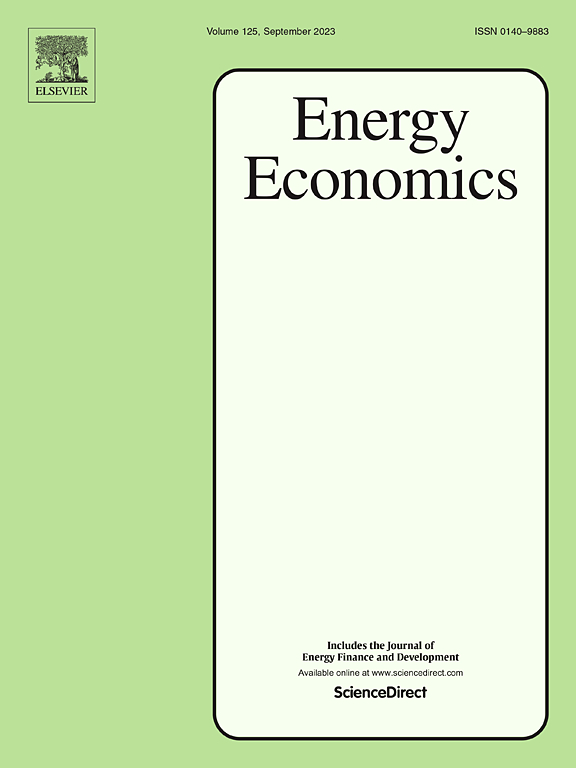Energy consumption transition and green total factor productivity in Chinese prefecture-level cities
IF 13.6
2区 经济学
Q1 ECONOMICS
引用次数: 0
Abstract
Actively promoting the energy consumption transition (ECT) and realizing green growth is a critical way for China to achieve its sustainable development goals, and it is also a core task for the current economic development of Chinese cities. Therefore, we explore the spatial effect of ECT on green total factor productivity (GTFP) through the spatial Durbin model (SDM) via balanced panel data from 279 prefecture-level cities in China from 2007 to 2019 and reveal the heterogeneous characteristics of this relationship. In addition, we investigate their nonlinear relationship characteristics. The results of the study are as follows. (1) ECT significantly enhances GTFP with an obvious spatial spillover effect. (2) ECT in the eastern region (EAR) positively affects GTFP in both local and neighboring cities, but the spatial spillover effect in the central region (CTR) is not significant, and the western region (WER) has a suppressed spatial spillover effect. (3) ECT in resource-based cities (RCs) positively affects GTFP in both local and neighboring cities. However, its spatial spillover effect is not significant in non-resource-based cities (non-RCs). (4) The results for the double-threshold effect show a nonlinear relationship. Only after crossing the second threshold does ECT contribute significantly to GTFP. Formal environmental regulation (FER) and informal environmental regulation (IER) are nonlinear characteristics of the ECT and GTFP. Moreover, we find that IER has a greater effect on the relationship than FER does. This research provides an effective reference for China to move toward green growth.
求助全文
约1分钟内获得全文
求助全文
来源期刊

Energy Economics
ECONOMICS-
CiteScore
18.60
自引率
12.50%
发文量
524
期刊介绍:
Energy Economics is a field journal that focuses on energy economics and energy finance. It covers various themes including the exploitation, conversion, and use of energy, markets for energy commodities and derivatives, regulation and taxation, forecasting, environment and climate, international trade, development, and monetary policy. The journal welcomes contributions that utilize diverse methods such as experiments, surveys, econometrics, decomposition, simulation models, equilibrium models, optimization models, and analytical models. It publishes a combination of papers employing different methods to explore a wide range of topics. The journal's replication policy encourages the submission of replication studies, wherein researchers reproduce and extend the key results of original studies while explaining any differences. Energy Economics is indexed and abstracted in several databases including Environmental Abstracts, Fuel and Energy Abstracts, Social Sciences Citation Index, GEOBASE, Social & Behavioral Sciences, Journal of Economic Literature, INSPEC, and more.
 求助内容:
求助内容: 应助结果提醒方式:
应助结果提醒方式:


